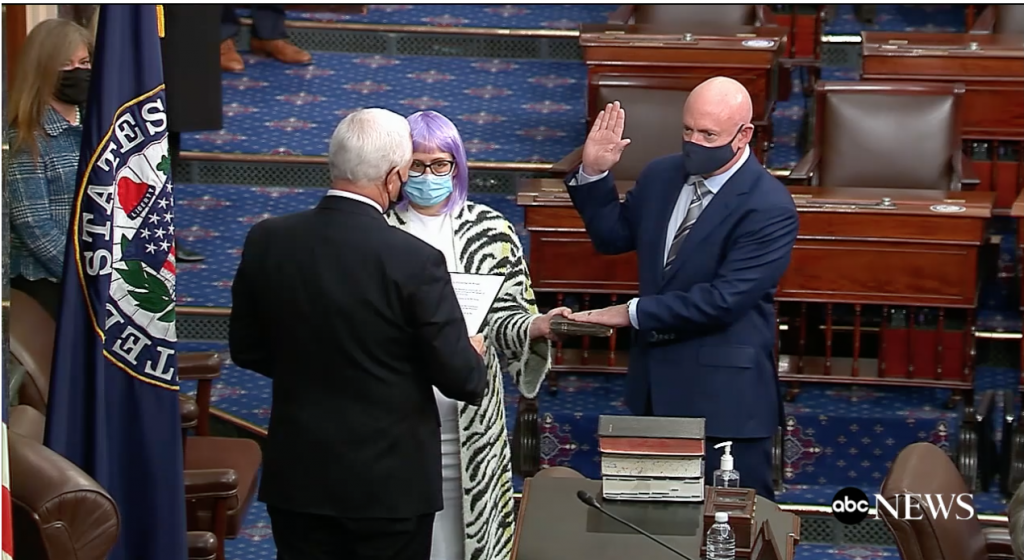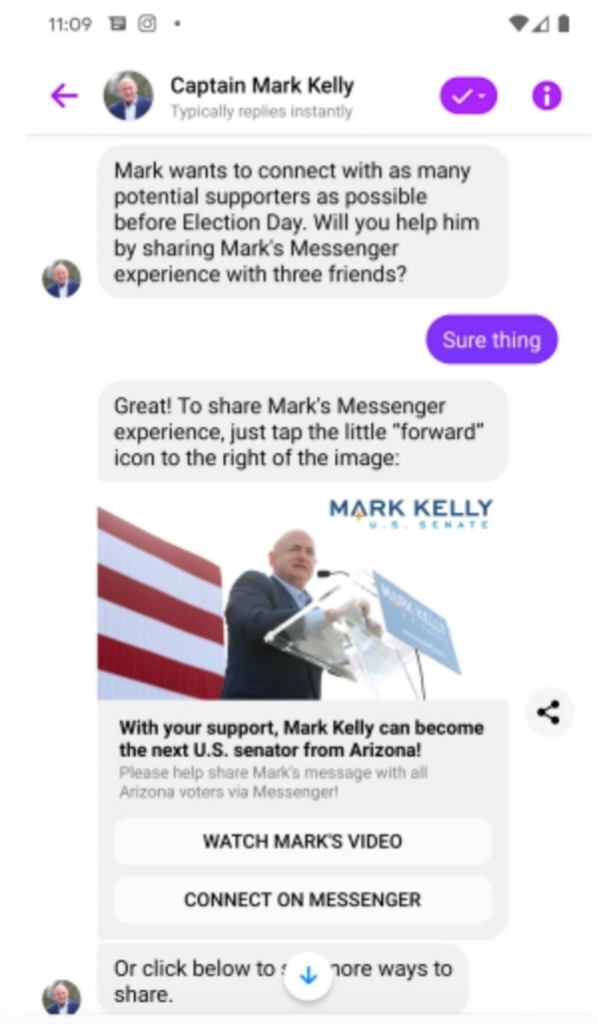
Vice President Mike Pence swears in Mark Kelly, Arizona’s Newest Senator, as Sen. Kyrsten Sinema holds the Bible. (Source: ABC News)
Algorithm-driven Chatbots Helped Kelly Win Senate Seat During Time of Pandemic
Long considered a Republican stronghold in American politics, Arizona made headlines December 2 with the swearing-in of former astronaut Mark Kelly.
The senior Democratic Arizona Senator Kyrsten Sinema held the Bible while Vice President Pence swore in newly-elected Democrat Mark Kelly as the new Senator from Arizona. The state had not had two Democratic senators since 1953. A story from venturebeat.com spotlights the use of AI to help get Mark Kelly elected.
According to writer Manasa Gogineni, Kelly’s campaign got a major assist from chatbots powered by AI in reaching out to potential voters.
Amplify.ai, an enterprise-level conversational AI platform, helped several 2020 senatorial campaigns drive engagement with local constituents, using “natural language processing (NLP) and machine learning to attach to existing social media pages, analyze public sentiment and intent, and field individual questions through humanlike interactions with AI chatbots.”
Campaigns were traditionally powered by people on the ground who would poll people in study groups or face-to-face interviews—until the pandemic issued in heavy reliance on Zoom and digital connecting through chatbots.
In a statement to VentureBeat, Justin Jenkins, the digital director for Kelly’s campaign, commented on his team’s adoption of conversational AI.
“When the pandemic hit, the campaign quickly began exploring new and creative ways to replicate the in-person conversations that we traditionally had at the doors,” Jenkins said. “We chose to test Amplify’s conversational AI because of its ability to scale and customize the user experience based on the user’s history with the campaign.”
Kelly’s campaign couldn’t risk spreading COVID-19 by visiting constituents. So it went digital.
Using Chatbots
Older chatbots were primarily based on strict inputs and outputs. For example, if a user typed “what is the capital of Arizona” into a bot on Facebook Messenger four years ago, the bot might have replied “Phoenix.” The conversational AI used in the most recent election goes further, working to interpret the user’s intent, or the different phrases people may use to ask about one topic. It then seeks to assemble a helpful, friendly, relevant response — and mirror the back-and-forth exchange of a human conversation.
Like a house call, individual messages from a chatbot could more strongly connect users to a candidate’s platform and allow a campaign to recruit them as donors, volunteers, and voters. The Mark Kelly campaign reported that it engaged with over 180,000 voters via Facebook Messenger in the first month of its conversational AI program.

In addition to the insights campaign workers gained through Amplify.ai’s analysis, conversational AI can engage with people at a speed and scale unmatched by human teams.
If, for example, a campaign received over 100,000 written engagements in one month, that would translate to over 3,000 individual messages or comments per day, which would require at least six full-time volunteers or staff members to reply to an average of a message a minute. The right AI could, in theory, reduce and manage this task while engaging constituents and inspiring them to volunteer, vote, and donate. According to de Silva, Amplify.ai has created over 10 billion engagements with over 500 million consumers since its launch.
And that in part is how a second Democratic candidate got elected in the formerly Republican-dominated state of Arizona.
The article further explores how Amplify.ai was used across the country and in multiple campaigns and will likely be used in the very near future for the 2022 congressional races.
read more at venturebeat.com







Leave A Comment